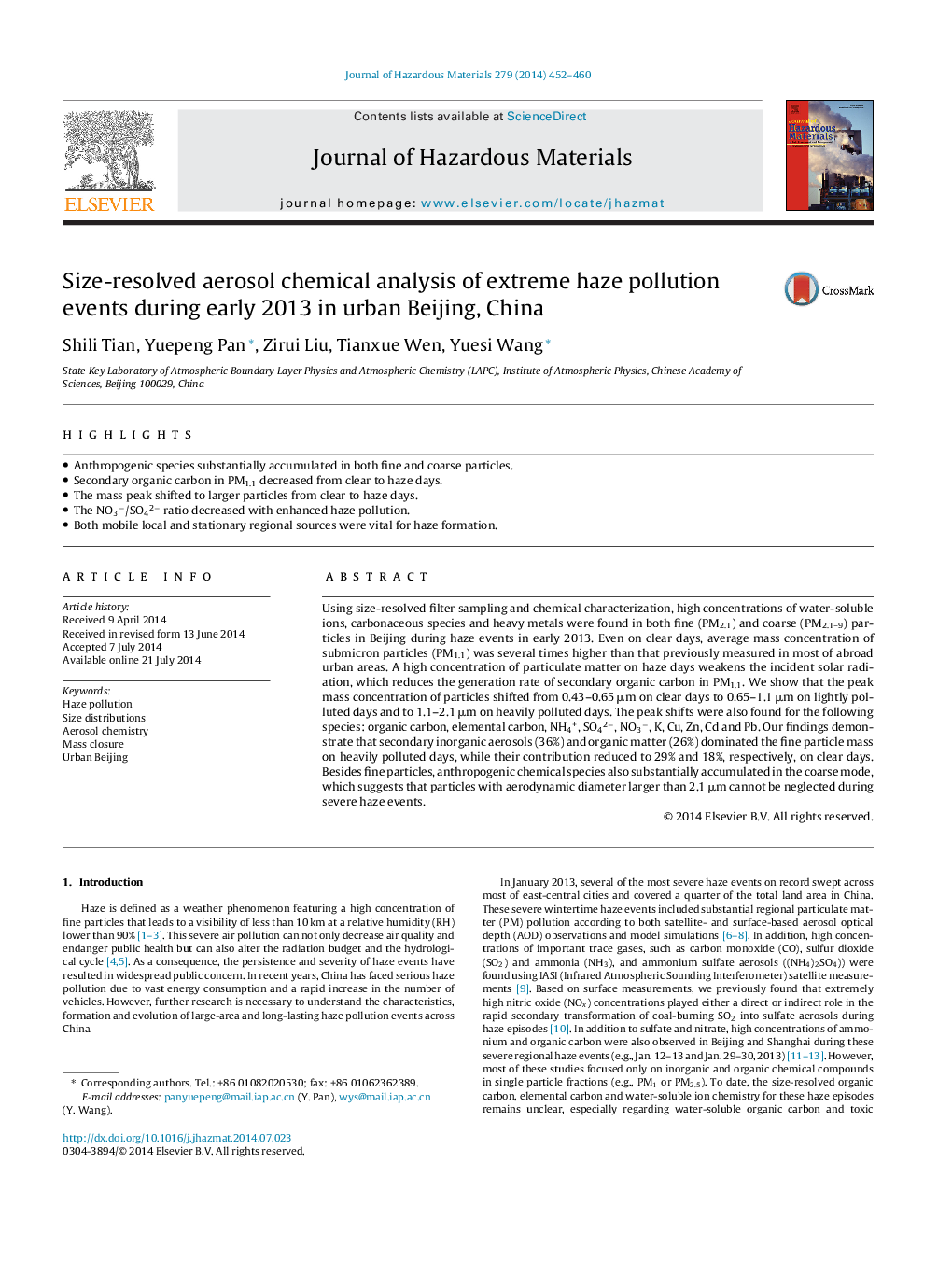| Article ID | Journal | Published Year | Pages | File Type |
|---|---|---|---|---|
| 576629 | Journal of Hazardous Materials | 2014 | 9 Pages |
Abstract
Using size-resolved filter sampling and chemical characterization, high concentrations of water-soluble ions, carbonaceous species and heavy metals were found in both fine (PM2.1) and coarse (PM2.1-9) particles in Beijing during haze events in early 2013. Even on clear days, average mass concentration of submicron particles (PM1.1) was several times higher than that previously measured in most of abroad urban areas. A high concentration of particulate matter on haze days weakens the incident solar radiation, which reduces the generation rate of secondary organic carbon in PM1.1. We show that the peak mass concentration of particles shifted from 0.43-0.65 μm on clear days to 0.65-1.1 μm on lightly polluted days and to 1.1-2.1 μm on heavily polluted days. The peak shifts were also found for the following species: organic carbon, elemental carbon, NH4+, SO42â, NO3â, K, Cu, Zn, Cd and Pb. Our findings demonstrate that secondary inorganic aerosols (36%) and organic matter (26%) dominated the fine particle mass on heavily polluted days, while their contribution reduced to 29% and 18%, respectively, on clear days. Besides fine particles, anthropogenic chemical species also substantially accumulated in the coarse mode, which suggests that particles with aerodynamic diameter larger than 2.1 μm cannot be neglected during severe haze events.
Related Topics
Physical Sciences and Engineering
Chemical Engineering
Chemical Health and Safety
Authors
Shili Tian, Yuepeng Pan, Zirui Liu, Tianxue Wen, Yuesi Wang,
